I’m introducing a perfect pattern for summer – the Kelsey elastic waist Bermuda shorts! Featuring an elastic waist and patched front pockets, these shorts offer a relaxed fit with a touch of charm. With an 11-inch inseam, these versatile shorts can be dressed up or down, making them a perfect addition to any summer wardrobe. Let’s look at the details:
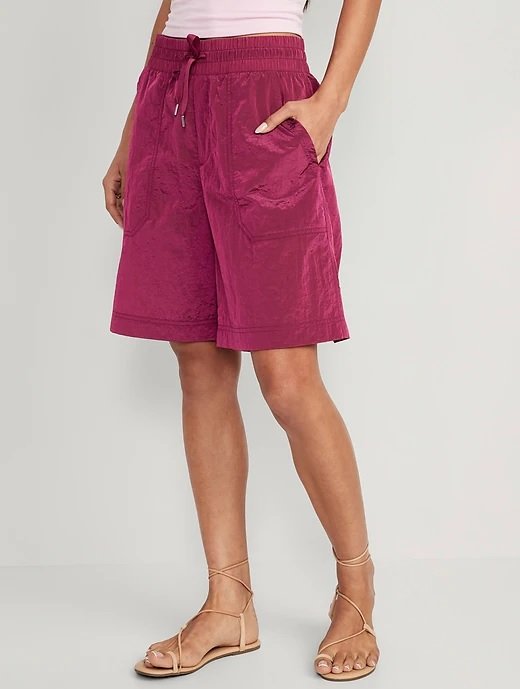
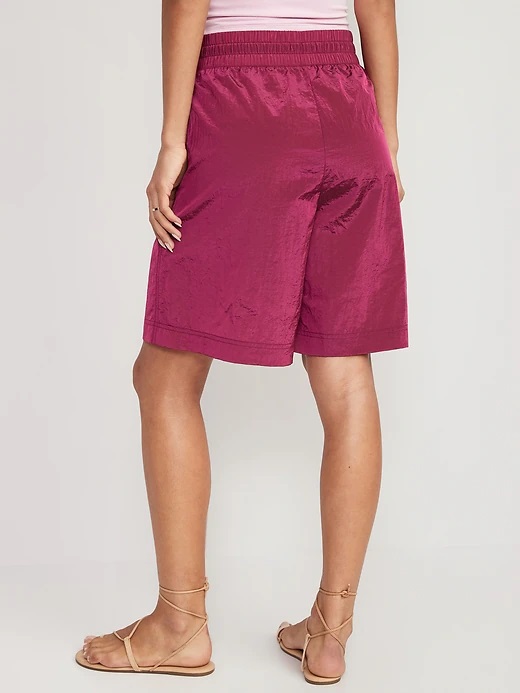
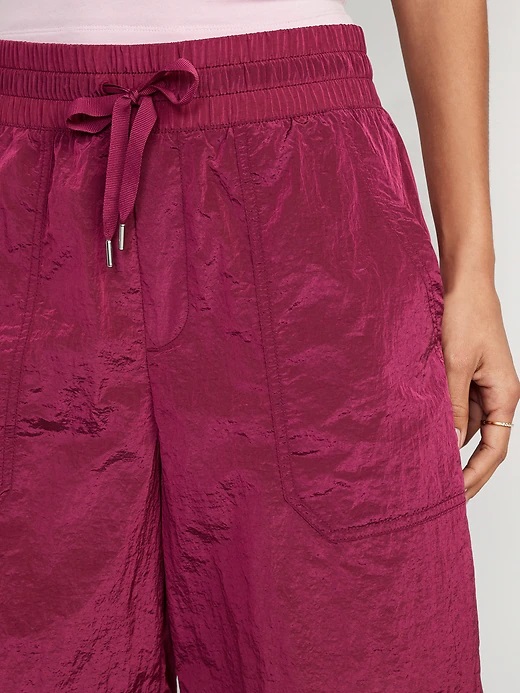
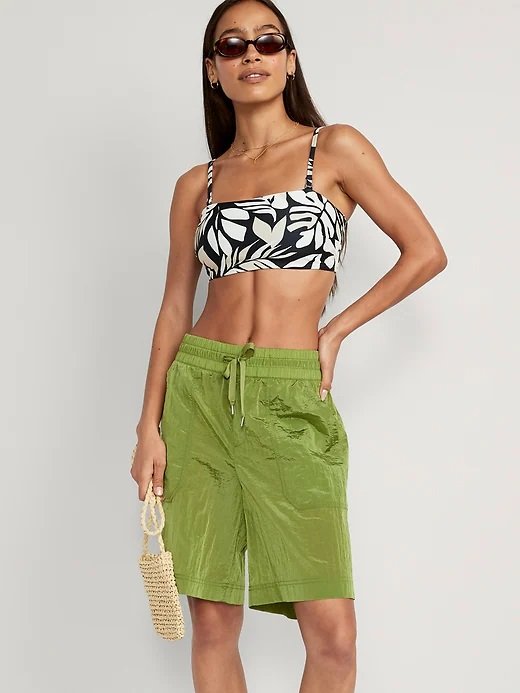

Bermuda shorts are versatile and can be styled in a variety of ways to create different looks. Here are a few ideas:
1. Casual Look: For a comfortable, laid-back look, pair your Bermuda shorts with a graphic t-shirt or tank top and sneakers. You can add a denim jacket or a cardigan if the weather is cool.
2. Dressy Look: To dress up your Bermuda shorts, pair them with a blouse or a button-down shirt and heeled sandals or pumps. You can accessorize with statement jewelry, a clutch, or a belt to cinch in your waist.
3. Beach Look: For a beachy vibe, wear your Bermuda shorts with a swimsuit or a bikini top and flip flops or espadrilles. You can throw on a wide-brimmed hat and sunglasses to complete the look.
4. Sporty Look: If you’re heading to the gym or going for a run, pair your Bermuda shorts with a tank top and sneakers. You can also add a sweatshirt or a hoodie if it’s chilly.
5. Chic Look: For a chic and trendy look, pair your Bermuda shorts with a crop top and high heels. You can also add a blazer or a leather jacket to elevate the look.
Remember to choose colors and patterns that complement your skin tone and body type. Experiment with different styles until you find the one that makes you feel confident and comfortable.
My pattern is made in 10 sizes from XXS to 5XL so you may find a suitable size for yourself. If you are not sure which size suits you, take a look at the measurement table before doing anything here: SIZE GUIDE.
The pattern is made using layered PDF, please check for your desired size before printing so you won’t waste your paper. I have included a first page with many details about sizing and printing, so please first read the first page and make sure you know what size you need! If you still do not know how to print a layered PDF, please check for the printing instruction in this post: PRINTING GUIDE.
You can print this using your home printer and A4/Letter paper. I calculated the printing area so that you will be able to use either type of paper to print the pattern out perfectly. Always print the first page first and check with the test square if you are printing at the right scale before you print out the whole pattern – avoid waste of ink and waste of paper, save the earth!
Some PC may print smaller than actual size even when you choose 100% scale – I don’t know why this problem exist, but my HP laptop cannot print true to size. I have to scale up to 103% to get the right size. You may need to check with your PC to see if it prints true to size, if not, scale up a bit.
SEWING INSTRUCTION
You will need
How much fabric do you need for this piece of garment? To be precise, you may need to check how much fabric you need before buying. It will depend on the selected pattern size, the width, and design of the fabric you plan to use. Just to be sure, print all the paper patterns and lay them out at the width of fabric you plan to use (usually from 90 to 150 centimeters or 35 to 60 inches). Measure how much fabric you will need. Don’t forget to account for pieces that need to be cut multiple times and pieces that are cut on the fold.
Cutting instruction:
After printing out and taping all the pattern pages together, you will get something similar to this:
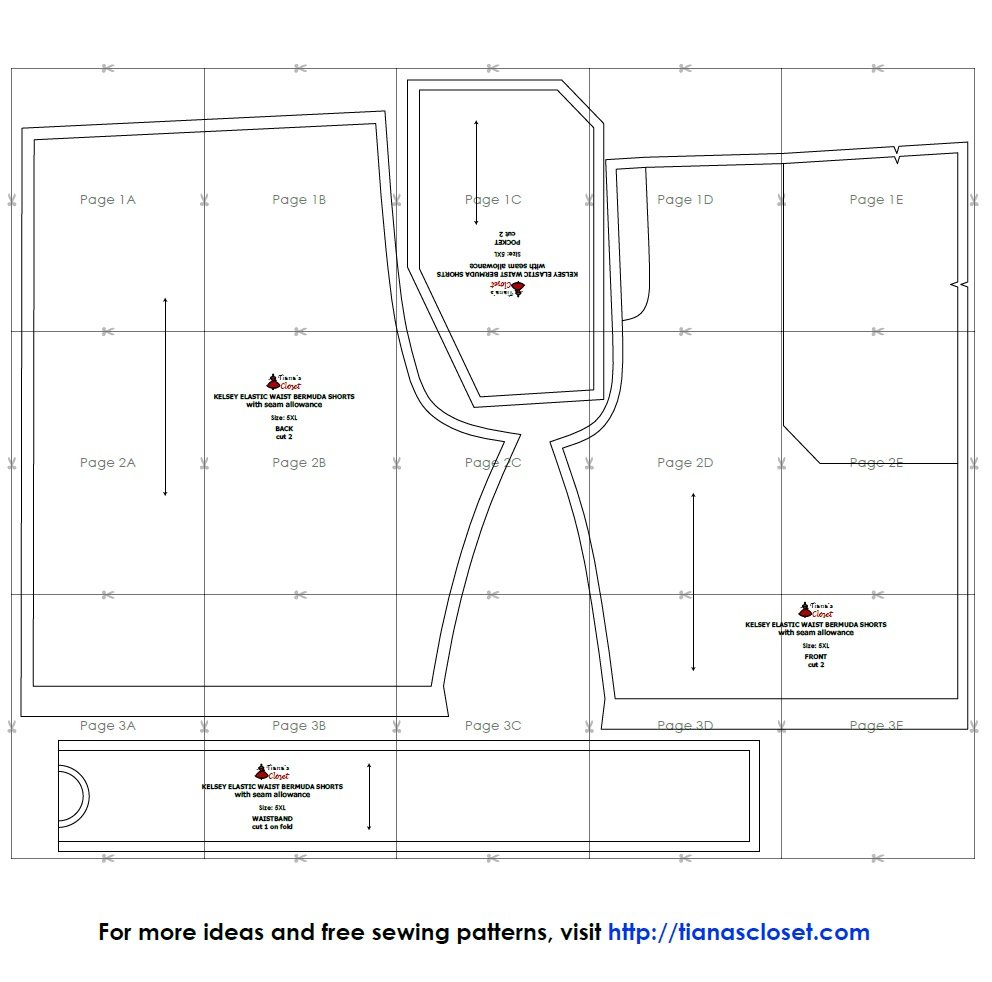
You will see that there are 2 sets of lines on each pattern piece. The inner lines are sewing line (and you sew along these lines), and the outer lines are cutting lines (you cut the fabric along these lines, remember the folding lines where you have to fold the fabric before cutting). The distance between sewing line and cutting line is seam allowance, and it varies from point to point. For example, the side seam allowance is about 1/2 inch (1.2cm), and seam allowance at hemline is 1 inch (2.5cm). This is the reason why I do not remove the sewing lines from the pattern. Please use it as a guide to know how much seam allowance you need to give at each seam.
The fabric will be cut into following pieces:
Place the pattern pieces on the fabric, pin the pattern pieces to the fabric to secure them in place. Using sharp scissors, carefully cut out the fabric pieces along the outer lines of the pattern. Take your time to ensure precise and clean cuts, as this will affect the fit and overall appearance of your garment.
Make sure to mark all notches and other design features such as darts, pleats etc. from the pattern pieces onto your fabric. When sewing the garment, pay attention to notches, they must match up.
Sewing instruction:
1. Serge/zig zag stitch the edges of the fabric pieces to prevent fabric to unravel.
2. Take the Pocket piece, fold the pocket opening in and sew the pocket opening. You can also use binding to get a more professional looking pocket opening.
3. Attach the pocket to the corresponding Front piece. Press seam allowance of front patch pocket to the wrong side. Place the Pocket piece wrong side facing the Front piece (two pieces right side up facing you). Align the Pocket to the marking on the Front piece and topstitch to Front piece along marking. Topstitch pockets along Pocket edges and at 1/3 inch.
4. Place Front and Back pieces right side facing. Pin and sew the side seam.
5. Sew the inseam of the pants. Do it with both sides.
6. Turn one leg inside out. Push it into the other leg, matching the crotch and the inseam. Pin and sew to join the two legs.
7. (optional) The design has faux zipper fly detail, so you may need to sew along the marking to create the illusion of a zipper (se the model photo). You can skip this step.
8. Sew two short ends of the waistband. Fold it in half to hide the seam allowance inside.
9. Pin the waistband to the main garment, right side facing. Sew to attach the waistband to the main garment, leaving 2 inch opening to insert elastic.
10. Insert elastic to the waistband. Sew two ends of elastic. Sew to close the opening.
11. Top stitch the elastic waist to prevent twisting.
12. (optional) Poke two holes at the center front, thread in the drawstring cord.
13. Hem the garment.
With the addition of the patch pocket, this design needs a bit of attention, but you will get a very nice garment.
And here is the download link:
KELSEY ELASTIC WAIST BERMUDA SHORTS (SIZE XXS – 5XL) A4 paper
KELSEY ELASTIC WAIST BERMUDA SHORTS (SIZE XXS – 5XL) A0 paper
To download just click on the link above and choose “Save link as”. The PDF file will be downloaded to your device.
Happy sewing! And don’t forget to share your project on my Facebook page: Tiana’s Closet Sewing Patterns

